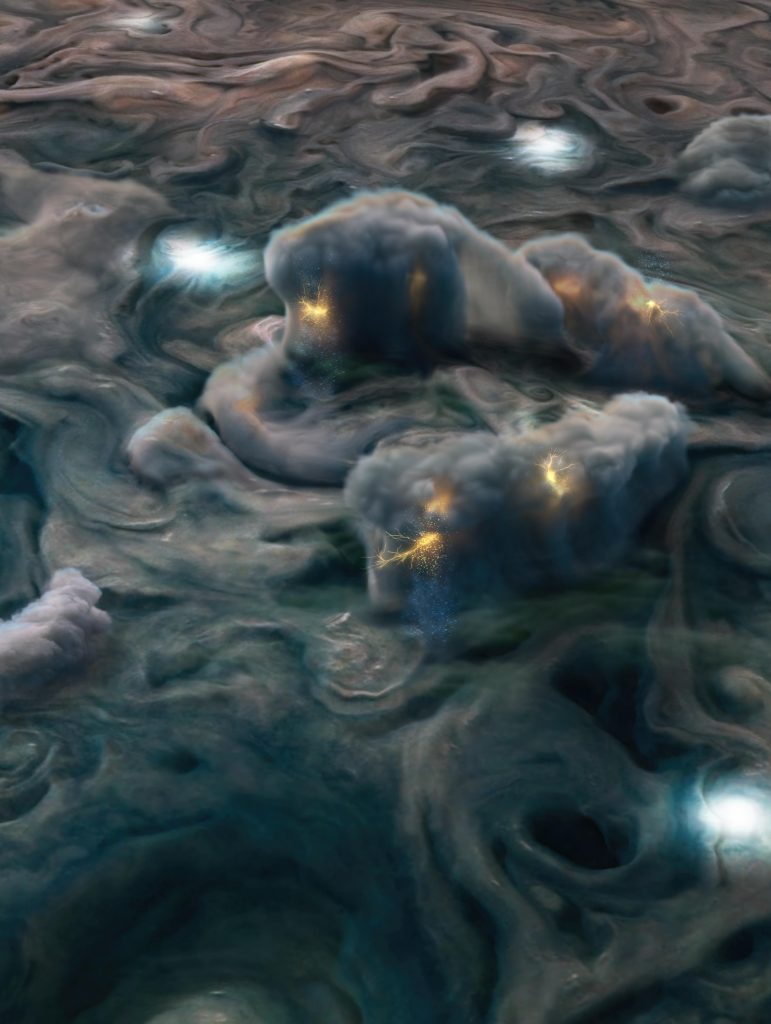
While planet Earth has been dealing with Hurricane Isaias, we turn instead to another planet full of storms – Jupiter.
In a trio of papers released yesterday in Nature and the Journal of Geophysical Research: Planets, researchers used data from NASA Juno’s microwave radiometer and found evidence of ammonia-rich hail and shallow lightning.
On Earth, lightning is thought to occur where water exists in all three elemental states – solid, liquid, and gas. Storms on Jupiter work in a similar fashion, especially deep in the atmosphere where the temperature can be close to the freezing point of water, except that here, the storms circulate water-ice crystals up into the higher atmosphere where it meets a layer of ammonia vapor, which acts as an antifreeze.
The ice crystals then partially melt, and the water mixes with the ammonia. These new crystals get heavier and begin to sink back into the cloud layer, acquiring a thicker and thicker layer of water ice. The deeper these “mushballs” fall into Jupiter’s atmosphere, the warmer they get, and the ice crust melts until both the ammonia and the water ice evaporate into the lower atmosphere.
Which brings us to how the ammonia mixing is important. Scientists have been pondering why the amount of ammonia in the atmosphere varies across Jupiter. It turns out that these mushballs are depleting the deep atmosphere of its ammonia as storms circulate the crystals up and down. So where there are thunderstorms, the ammonia levels drop over time, causing the variability we have seen in previous data.
But what about the lightning?
Juno’s cameras observed small flashes of lightning in the cloud tops, and because Juno is closer to the planet than previous missions, it can detect even smaller and shallower flashes than before. Since these newly observed flashes are occurring in regions where water alone is not found in its liquid state, and since we have already explained that lightning needs all three states to occur, the researchers determined that the liquid ammonia-water mix may be the source of that third elemental state.
Any new understanding of how a planet works is amazing to me, and we can someday apply these lessons to exoplanets.
More Information
“Storms and the Depletion of Ammonia in Jupiter: I. Microphysics of ‘Mushballs,’” T. Guillot et al., 2020 Aug. 6, Journal of Geophysical Research: Planets
“Storms and the Depletion of Ammonia in Jupiter: II. Explaining the Juno Observations,” T. Guillot et al., 2020 Aug. 6, JGR Planets
“Small Lightning Flashes Indicating Shallow Electrical Storms,” H. N. Becker et al., 2020 Aug. 6, Nature




 Join the Crew!
Join the Crew!
 Escape Velocity Space News
Escape Velocity Space News
0 Comments